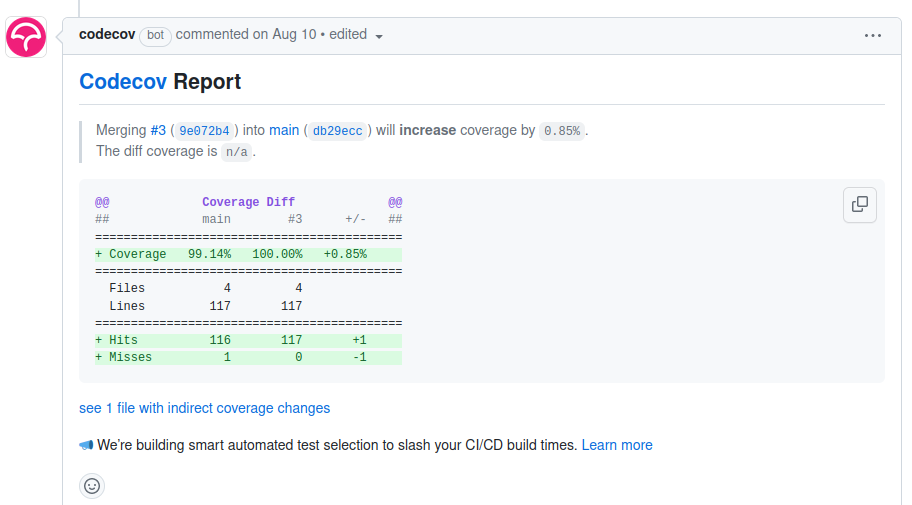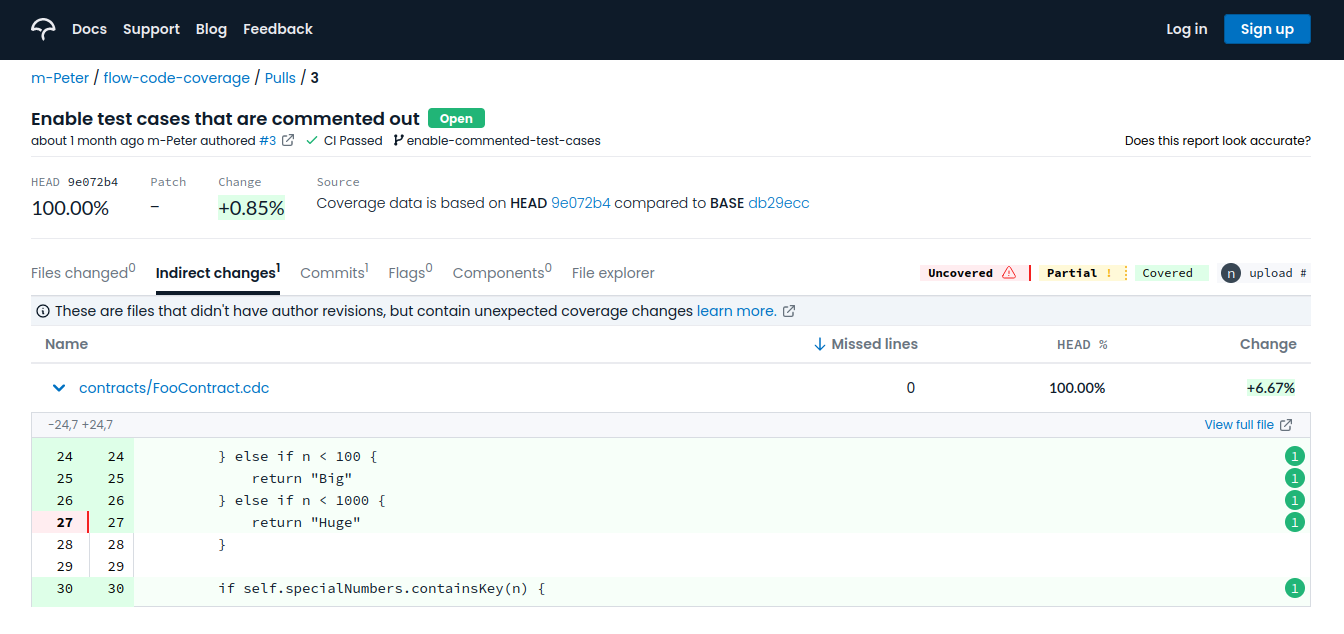Testing Your Contracts
Testing is an essential part of smart contract development to ensure the correctness and reliability of your code. The Cadence Testing Framework provides a convenient way to write tests for your contracts, scripts and transactions which allows you to verify the functionality and correctness of your smart contracts.
Install Flow CLI
The Flow CLI is the primary tool for developing, testing, and deploying smart contracts to the Flow network.
If you haven't installed the Flow CLI yet and have homebrew installed, simply run brew install flow-cli. Alternatively, refer to the Flow CLI installation instructions.
Create a new project
In your preferred code editor, create a new directory for your project and navigate to it in the terminal. Then initialize a new Flow project by running the command flow init. This will create a flow.json config file that contains the project's configuration.
_10mkdir test-cadence_10cd test-cadence_10flow init
Write a simple smart contract
In your code editor, create a new file called calculator.cdc and add the following code:
Add the smart contract to the config
Next up, we need to add our new contract in the contracts key in the flow.json config file. More specifically, we need to add the contract name, location and an address alias for the testing environment.
_13{_13 "contracts": {_13 "Calculator": {_13 "source": "./calculator.cdc",_13 "aliases": {_13 "testing": "0x0000000000000007"_13 }_13 }_13 },_13 "networks": {...},_13 "accounts": {...},_13 "deployments": {...}_13}
For the time being, the address for the testing alias, can be one of:
0x00000000000000050x00000000000000060x00000000000000070x00000000000000080x00000000000000090x000000000000000a0x000000000000000b0x000000000000000c0x000000000000000d0x000000000000000e
In the next release, there will be 20 addresses for contract deployment during testing.
Write unit tests
In the same directory, create a new file called calculator_test.cdc and add the following code:
This code:
- imports the
Calculatorcontract from thecalculator.cdcfile (according toflow.json) - deploys the
Calculatorcontract to the address specified in thetestingalias - defines two test cases:
testAdd()andtestSubtract() - calls
add()andsubtract()methods with different input values respectively.
Running the test cases
To run the test cases, use the following command in the terminal:
_10flow test --cover --covercode="contracts" calculator_test.cdc
This command uses the Flow CLI to run the test cases and display the output. You should see the following output:
_10Test results: "calculator_test.cdc"_10- PASS: testAdd_10- PASS: testSubtract_10Coverage: 66.7% of statements
This output indicates that both test cases ran successfully, and the two smart contract methods are functioning as expected. With the supplied flags (--cover & --covercode="contracts"), we also get code coverage insights for the contracts under testing. The code coverage percentage is 66.7%, because we have not added a test case for the multiply method. By viewing the auto-generated coverage.json file, we see:
_16{_16 "coverage": {_16 "A.0000000000000007.Calculator": {_16 "line_hits": {_16 "14": 0,_16 "4": 1,_16 "9": 1_16 },_16 "missed_lines": [_16 14_16 ],_16 "statements": 3,_16 "percentage": "66.7%"_16 }_16 }_16}
Line 14 from the Calculator smart contract is marked as missed. This is the line:
_10return a * b
which is the multiply method.
By adding a test case for the above method:
our code coverage percentage goes to 100%:
_10flow test --cover --covercode="contracts" calculator_test.cdc_10_10Test results: "calculator_test.cdc"_10- PASS: testAdd_10- PASS: testSubtract_10- PASS: testMultiply_10Coverage: 100.0% of statements
Advanced Testing Techniques
The Cadence testing framework provides various features and techniques for writing comprehensive test scenarios. Some of these include:
- Code Coverage: You can use the
--coverflag with theflow testcommand to view code coverage results when running your tests. This allows you to identify areas of your code that are not adequately covered by your test inputs. - Test Helpers: Test helpers are reusable functions that help you set up the initial state for your test files. You can define test helpers in a Cadence program and use them in your test files by importing it whenever needed.
- Assertions: The testing framework provides built-in assertion functions, such as
assertEqual,beNil,beEmpty,contain, to help you verify the expected behavior of your smart contracts. - Test Suites: You can organize your test files into test suites to improve the readability and maintainability of your test code. Test suites allow you to group related test cases and set up common test helpers for all the tests in the suite.
- Integration tests: In our previous example, we would directly call the available methods on the contract under test. This is generally categorized as unit testing. You can also write integration tests, by executing scripts & transactions to interact with the contracts under testing. If you would like to write your tests in Go, instead of Cadence, you can use Overflow tool to run integration tests against either an local emulator, testnet, mainnet or an in memory instance of the flow-emulator.
By leveraging these advanced testing techniques, you can write more robust and reliable smart contracts in Cadence. In this example, we set up a basic testing environment, wrote a simple smart contract in Cadence, and created a test file to verify its functionality. We then used the Flow CLI to run the test file and confirm that the smart contract is working correctly.
This is a basic example, and there are many more advanced features and techniques you can explore when working with the Cadence Testing Framework.
For more in-depth tutorials and documentation, refer to the official Cadence language documentation and the Flow CLI documentation.
Testing Requirements
It is suggested to follow the following best practices:
- Every publicly exposed feature of a contract and its resources should have unit tests that check both for success with correct input and for failure with incorrect input. These tests should be capable of being run locally with the Flow emulator, with no or minimal extra resources or configuration, and with a single command.
- Each user story or workflow that uses the smart contracts should have an integration test that ensures that the series of steps required to complete it does so successfully with test data.
Make sure you test all contracts - and the integration into your application extensively before proceeding to the mainnet. You should aim to replicate all conditions as closely as possible to the usage patterns on mainnet.
Writing Tests
There are official SDKs/frameworks for Flow in Cadence, Go and JavaScript.
In all three cases, the test code will need to deploy the contracts, configure accounts to interact with them and send transactions to them. It will then have to wait for the transactions to be sealed and check the results by catching exceptions, checking for events, and querying state using scripts.
Cadence tests
Cadence comes with built-in support for code coverage, as well as a native testing framework which allows developers to write their tests using Cadence.
This framework is bundled with the Flow CLI tool, which includes a dedicated command for running tests (flow test).
You can find examples of Cadence tests in the following projects: hybrid-custody, flow-nft, flow-ft. Visit the documentation to view all the available features.
The Hybrid Custody project is a prime example which utilizes both the Cadence testing framework and code coverage in its CI.

There is also a repository which contains some sample contracts and their tests.


The Cadence testing framework utilizes the emulator under the hood.
Go Tests
Tests in Go can be written using flow-go-sdk and the go test command.
You can find examples of Go tests in the following projects: flow-core-contracts, flow-nft, flow-ft.
These tests are tied to the emulator but can be refactored to run on testnet
Testing Your Application
Automated Testing of Contract Code
All contracts should include test coverage for all contract functions. Make sure you've accounted for success and failure cases appropriately.
Tests should also be runnable in automated environments (CI). You can use the Cadence testing utils to create tests for your smart contract code.
Stress Testing Live Applications Before Mainnet
Once you deployed your application to the testnet, you should record how your application handles non-trivial amounts of traffic to ensure there are no issues.
Get familiar with the Cadence anti-patterns to avoid avoid problematic or unintended behavior.
References
- Reference documentation for Cadence testing
- Overflow is a powerful Golang-based DSL for efficient testing and execution of blockchain interactions
- projects that have good examples of robust test cases: